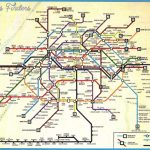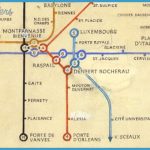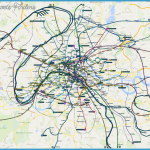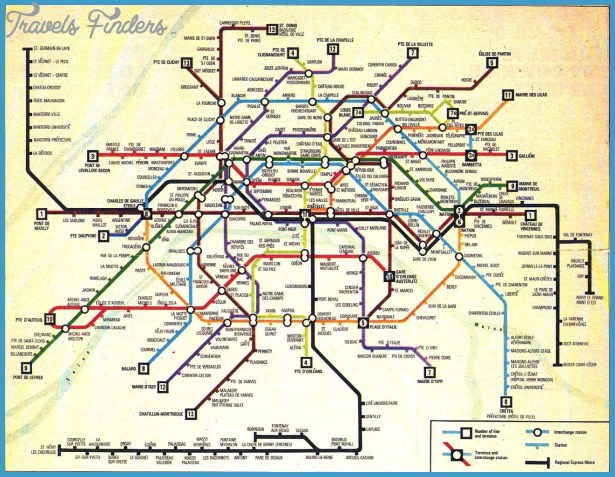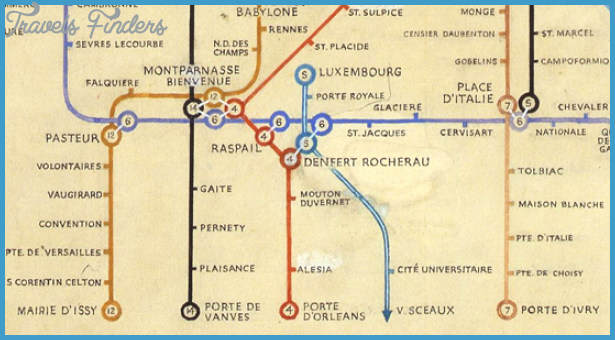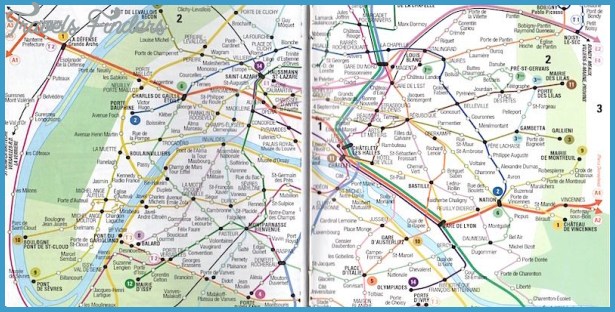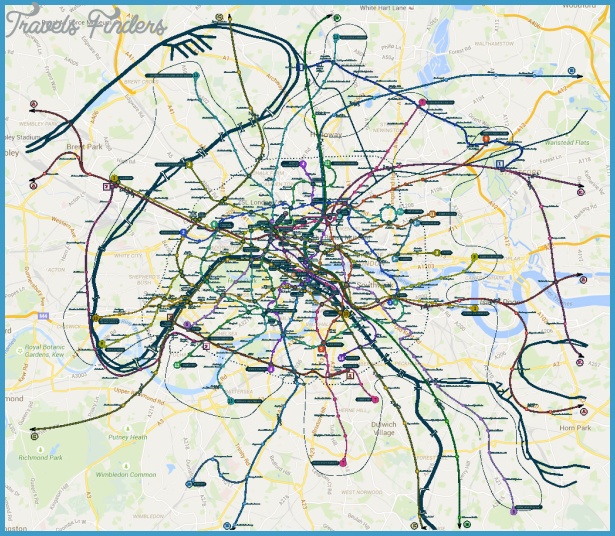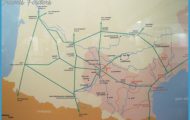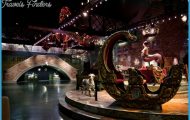You may well be familiar with Hector Guimard’s graceful Art Nouveau wrought iron structures that grace the entrances to many metro stations. I’d like to offer a glimpse at another slice of the design history of the Paris metro, the Decor Nord-Sud, or “North-South Decoration,” that harkens back to the start of the 20th century.
Chances are good that at some point you will be taking line 12 which runs from the Porte d’Aubervilliers in the north through Montmartre (Abbesses, Lamark-Caulaincourt), to Concorde and Assemblee Nationale in the center on to Montparnasse and then south to the Porte de Versailles and Issy-les-Moulineaux.
The Sevres-Babylone station is a particularly good example of this decor; it was built at the start of the 20th century by a talented engineer named Jean-Baptiste Berlier. In order to compete with another urban rail company Berlier sought to create a “refined” design aesthetic for the platforms and corridors. Notice the white ceramic tiles that contrast with the enameled metal of his competitor.
The name of the station is written in white on a blue background – if you pay attention you’ll see that this is true of many of the stations on this line. Similarly, the friezes that decorate the station and border the station names and publicity panels are in green for stations with inter- connections (“correspondences”) and in blue or brown where there is only a single station. If you look closely at the publicity panels, you’ll see that the logo “NS” is part of the design. The tunnel roofs themselves are decorated, and, if you look at the archways at either end, you’ll see that the directions are written in ceramic tiles.
And while you are in the Sevres-Babylone station, you’ll see a clever design compromise; in the station on line 12, the name “Sevres” is larger than the name “Babylone.” Take the stairway to the platform of the connecting line 10 and you will see that here the name “Babylone” is large’ than “Sevres.” The reason? The two lines were run by competing companies. Originally, the station at line 12 was called “Sevres” after the rue de Sevres above, and the station at line 10 was named “Babylone” after the rue de Babylone that runs parallel to the rue de Sevres. Hence the hyphenated name when the two stations were linked together. Notice also the beautiful, but different ceramic tile designs on the line 10 station.
One has a tendency to rush from one attraction to another, however, en route, history sits in wait.

